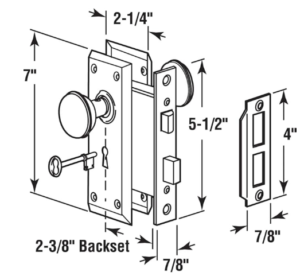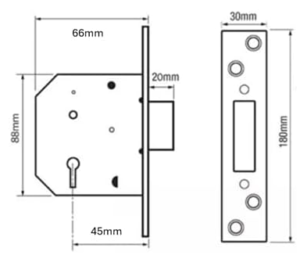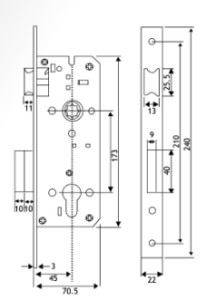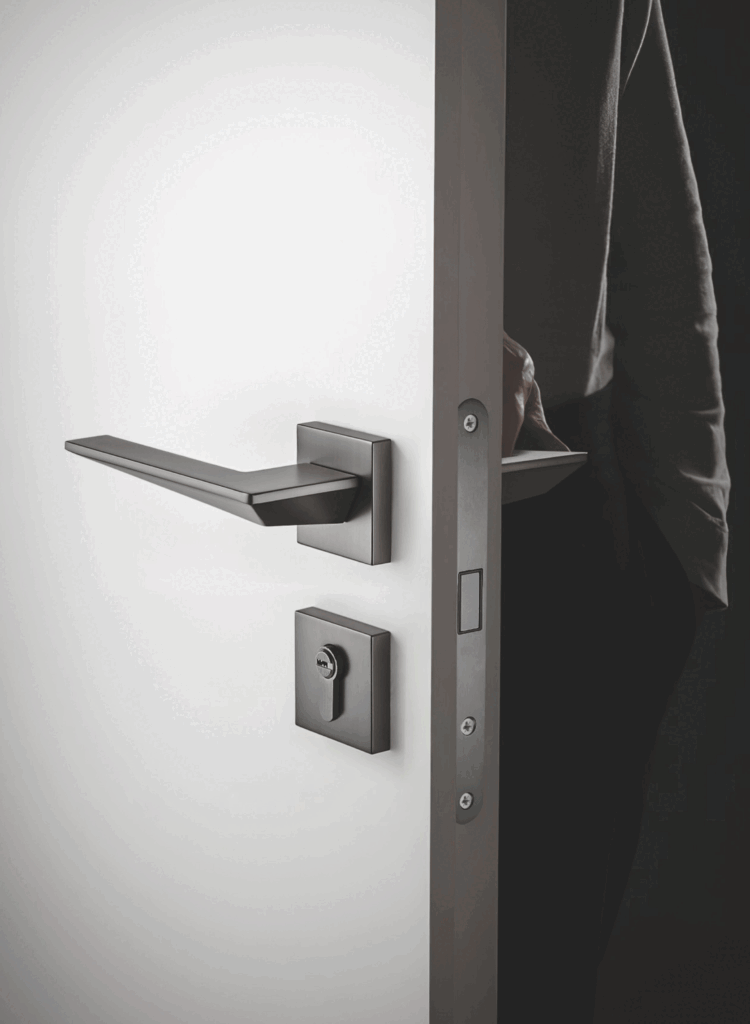Introduction
Getting the backset right is crucial for proper door lock installation. As a door hardware supplier with 20+ years of experience, we help manufacturers, importers, and retailers understand these technical details.
This guide explains what backset is, standard measurements worldwide, and how to avoid installation mistakes. We’ll also connect this to choosing the right door locks, handles, and latch systems for your projects.
1. What Is the Backset on a Door?
The backset is the distance from the edge of the door to the center of the lock cylinder or handle.
- It determines where the lock sits in the door.
- Affects compatibility with existing door preparations.
- Impacts security and smooth operation of the locking mechanism.
Most mechanical door locks (deadbolts, tubular latches) require specific backsets to function properly.
2. Typical Backset Measurements: Know Your Sizes
Backset standards vary by country. Here are the most common measurements:
North America
- 2-3/8″ (60mm): Standard for residential doors
- 2-3/4″ (70mm): Common for commercial/entry doors
- Some heavy-duty locks use 3″ (76mm) backsets

Europe & UK
- 45mm: Standard metric backset
- 55mm: Used in some European markets
- 60mm: Becoming more popular for universal compatibility

Australia/New Zealand
- 60mm: Most common measurement
- 70mm: Used in some commercial applications
Middle East
- 45/50mm: Most common measurement

Asia
Varies widely by country:
- China: Typically 60mm (aligning with international standards)
- Japan: Often 55mm or 60mm
Pro Tip: Always confirm backset requirements when ordering door locks for international projects. Our team can help specify the right products.
3. How to Measure Backset on Door Lock
Follow these steps:
- Open the door to access the edge
- Locate the cross bore (large hole for the lock)
- Measure from door edge to center of cross bore
- Verify measurement matches your lock specifications
Need help? We provide technical drawings for all our door hardware products.
4. How to Adjust Backset on Door Knob or Lock
Sometimes you need to adapt to existing doors:
Solutions for Mismatched Backsets
- Adjustable latch plates: Allow ±5mm tolerance
- Conversion kits: Available for some lock models
- New door preparation: Required for major differences
Best Practice: When ordering door handle sets in bulk, standardize backset requirements across your project.
5. Door Performance: What Happens If Backset Doesn't Match?
Using the wrong backset causes:
✔ Improper latch engagement (security risk)
✔ Difficulty turning handles (wear and tear)
✔ Visible gaps around hardware (poor aesthetics)
✔ Voided warranties on high-security locks
For commercial door closers and access control systems, correct backset is especially critical for smooth operation.
Conclusion
Understanding backset ensures proper door hardware installation and long-term performance. Whether you’re a door manufacturer, distributor, or property developer, getting this right saves time and money.
At UMAY, we supply door locks, handles, and hardware kits with various backset options. Contact us for:
- Bulk orders with custom backset specifications
- Technical support for international projects
- Complete door hardware packages
Share This Story, Choose Your Platform!

